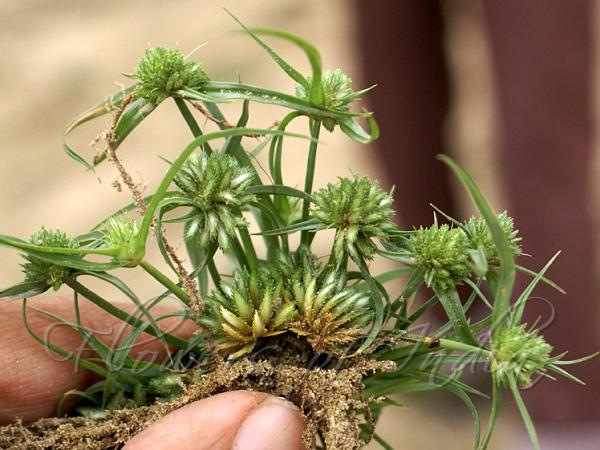|
| Pygmy Sedge |
|

|

| File size | 155036 |
| Original date | 4/10/11 10:52 AM |
| Resolution | 748 x 561 |
| Flash | Flash did not fire, auto |
| Focal length | 40.0mm |
| Exposure time | 1/125s |
| Aperture | 5.6 |
| Focus Distance | |
| Metering Mode | Multi-segment |
| Camera make | SONY |
| Camera model | DSLR-A100 |
| Sensor type |
|
|
|
|
Photo: |
Botanical name: Cyperus michelianus subsp. pygmaeus Family: Cyperaceae (Sedge family)
Synonyms: Cyperus pygmaeus Rottb., Juncellus pygmaeus, Dichostylis pygmaea
Synonyms: Cyperus pygmaeus Rottb., Juncellus pygmaeus, Dichostylis pygmaea
Pygmy Sedge is a clustered, annual grass, 3-22 cm.
Stem is 0.7-1.2 mm in diameter, trigonous, smooth. Leaves are up to as
long as stem; sheaths up to 50 mm, wide, soft, grey-brown or often
reddish. Leaves are up to 10 cm long, 1.5-2.5 mm wide, grey green, flat
or folded, keeled, margins often recurved, smooth or scabrous, tip
trigonous, pointed, scabrous. Inflorescence are 7-17 mm diameter, a
regularly spherical head of 5-9 spherical, stalkless, spirally arranged
partial inflorescences, tightly pressed together and separately
indistinguishable; 4-7 bracts foliose, up to 70 mm, much exceeding
length of inflorescence, first erect, finally reflexed. Partial
inflorescences are formed by 10-40 stalkless spikes, tightly spirally
arranged; spikes 2.5-3.5 x 0.8-1.4 mm, narrowly obovoid, compressed,
with 20-28 glumes, glume-like bract long-awned, glumes distichously
arranged, 1.4-1.6 mm, narrowly boat-shaped, mid-nerve green, prominent,
raised, 1-3 nerved on both sides, margins scarious, brownish towards
the tip. Pygmy Sedge is found from Africa to India, SE Asia to
Australia. Flowering: June-September.
| Identification credit: Gurcharan Singh | Photographed in Morni, Haryana. |
• Is this flower misidentified? If yes,